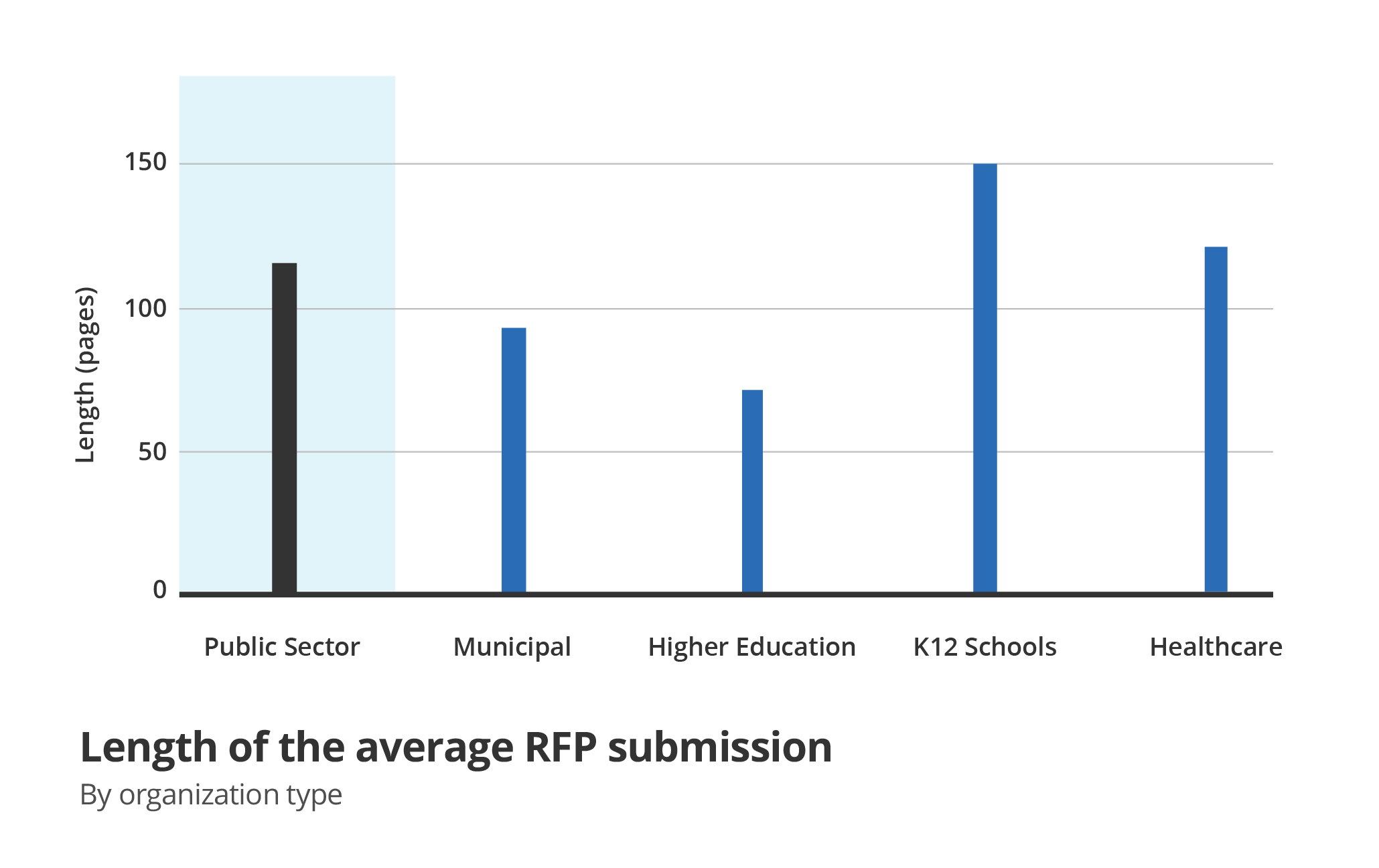Many Companies Hate Responding to K-12 RFPs. It May Not Be as Bad as They Think
The RFP process in K-12 is often more complex than in other public sectors, but school districts typically award contracts more quickly, according to a new analysis of requests for proposals.
The “State of the RFP 2019” report from e-procurement company Bonfire examined data from over 6,000 RFP submissions at 278 public sector organizations, including those in K-12, higher education, healthcare, and municipalities.
While K-12 RFPs typically contain more pages than RFPs in the other sectors and have more vendors bidding, the process actually goes more quickly from posting of the notice to award, the report found. That might come as a surprise to companies trying to sell in the K-12 space, who often complain that the public bidding process is slow, cumbersome, and counterproductive.
The report primarily looked at school districts with enrollments between 10,000 and 49,999 students.
“K-12 tends to be punching above its weight,” said Corry Flatt, CEO and co-founder of Bonfire in an interview. “K-12 procurement teams tend to run faster projects, but their [RFPs] are actually above the average in complexity.”
The report found that K-12 districts:
- Have the longest RFP submissions page count at 150 pages, compared to 116 pages in all the public sectors studied;
- Run fewer RFPs, with an average of 10 per year—the average public sector organization runs 18 RFPs per year;
- Have the highest number of RFP submissions, with an average of 6, compared to 4 in the public sector;
- Save about 20 percent using RFPs, compared to about 22 percent for the public sector examined in the report.
In addition, the average time from posting to award in K-12 shrank by 18 days from 2017 to 2018, the report found. Typically K-12 procurement teams view between 9,000 and 12,000 pages of proposals per year, but their average cycle time is 50 days compared to the 70-90 days of the other sectors, Flatt said.
The K-12 RFP process also includes fewer bid evaluators (2 compared to an average of 3 for the public sectors studied), which may streamline the process, he said. Notably, K-12 procurement teams tend to be smaller than in other sectors.
“For the equivalent size of spend, they have fewer resources, but they still manage to conduct faster processes dealing with more data,” Flatt said.
Across the public sectors examined, the report found that fewer than half of vendors who view RFP documents make a submission, a “troubling statistic,” the report notes. This could indicate that some RFP specifications are expensive to respond to and possibly rigid, with some vendors opting to avoid the expense of response.
But the fact that K-12 districts had the longest RFP page-count of all the public sectors studied, doesn’t necessarily mean those RFPs are deterring vendors from bidding, Flatt said.
School districts may have longer RFP documents because they must lay out boilerplate rules and regulations. He also noted that K-12 districts appear to be more specific about their requirements and do a better job of defining what they want to buy.
In response, vendors bidding on K-12 RFPs also had the longest average proposal length of the public sectors examined in the report. “If you’re being very explicit about your requirements, you’re going to get very specific answers,” Flatt said. Vendors “are going to take pains to address the points that you’ve asked them to address.”
Price Remains Major Consideration
But vendors should keep in mind that sometimes being more concise is a better strategy, Flatt said, particularly because the K-12 education market is more competitive than other public sectors. K-12 RFPs had an average of six bidders per RFP, while higher education institutions average three, and healthcare averages four.
Price remains an important consideration. An EdWeek Market Brief survey of district leaders from earlier this year found they are looking for clarity and transparency around pricing and want to know information about pricing early in the sales process. And while procurement plays a crucial role in K-12, not everyone in a district understands how it works.
The Bonfire report also examined three categories of RFP projects: construction, information technology and professional services.
Of those three categories, IT RFPs take the longest from posting to award and have the most evaluators, which is a concern because technology changes rapidly—half the requirements in an IT RFP will be invalid six months in the future, the report notes. So if the RFP process takes up too much time, vendors may struggle to meet new requirements upon implementation.
The report suggests that vendors replying to IT RFPs be specific about the problem that is trying to be solved rather than the granular details of the technology used to solve the problem.
“IT procurement is getting more and more complex,” Flatt said. This presents a further challenge for K-12 districts because their IT departments may not be on the cutting edge.
Graphic Credit: Bonfire
Follow EdWeek Market Brief on Twitter @EdMarketBrief or connect with us on LinkedIn.
See also:


hdcadscvvdavank you so much for this. I was into this issue and tired to tinker around to check if its possible but couldnt get it https://tracktrace.one/usps/ done. Now that i have seen the way you did it, thanks guys with regards
The “State of the RFP 2019” report from e-procurement company Bonfire examined data from over 6,000 RFP submissions at 278 public sector organizations, including those in K-12, higher education, healthcare, and municipalities.
陸劇 線上看, 韓劇 線上看, 台劇 線上看, 港劇 線上看, 日劇 線上看, 綜藝 線上看, 泰劇 線上看. Maplestage, https://8maple.su 楓林网, 楓林, 風林網, 瘦楓林網, 風林往, 8maple, 風鈴網, 風林, 風鈴往, 枫林网, Dramaq.
chloroquine tab https://chloroquineorigin.com/# hydrocychloroquine